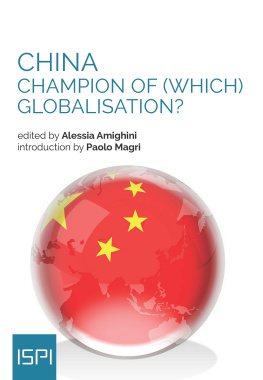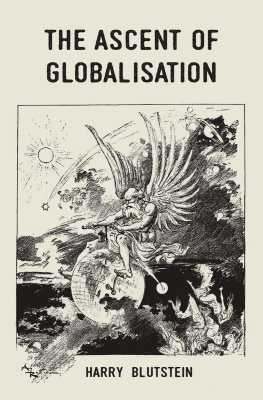First published 2012 in India
by Routledge
912 Tolstoy House, 1517 Tolstoy Marg, Connaught Place, New Delhi 110 001
Simultaneously published in the UK
by Routledge
2 Park Square, Milton Park, Abingdon, OX14 4RN
Routledge is an imprint of the Taylor & Francis Group, an informa business
2012 Narendar Pani and Nikky Singh
All rights reserved. No part of this book may be reproduced or utilised in any form or by any electronic, mechanical or other means, now known or hereafter invented, including photocopying and recording, or in any information storage and retrieval system without permission in writing from the publishers.
British Library Cataloguing-in-Publication Data
A catalogue record of this book is available from the British Library
ISBN: 978-0-415-52298-4
E xploring the boundaries that were relevant to the Bangalore end of the global garment circuit needed generous support from a variety of sources. The National Institute of Advanced Studies, Bangalore, through its RBI Programme on Interdisciplinary Approaches to Economic Issues, provided the material support that was needed. The authors also benefited a great deal from long interactions, both formal and informal, with colleagues at the institute. Beyond the boundaries of the institute, Naseer Humayun was extremely generous with his friendship and deep insights into the working of the garment industry. G. S. Kantha went well out of his way to facilitate our work within the industry. Parveen Kaur gave us the benefit of the wealth of her gendered experience. As always, Jamuna Rao provided the strong doses of reality that helped keep this from becoming another ivory-tower exercise. We hardly need to add that they cannot be held responsible for the errors that remain despite their untiring efforts.

A s popular perceptions of globalisation go, Shanthis story was not entirely typical. Nanne life computer tara ide (my life is like a computer), she said with a mixture of frustration, anger and irritation. Shanthis choice of metaphor1 was not surprising in Bangalore, given the citys reputation for information technology (IT) and the outsourcing that technology has enabled. The term Bangalored has been widely used elsewhere to refer to those in the developed world who found their jobs outsourced. The flipside of this term is the IT-related jobs, and the hopes of such jobs, offered to those in Bangalore. What made the use of the computer as a metaphor somewhat incongruous was that Shanthi quite obviously did not belong anywhere near the world of elevated expressways and glass-draped buildings that was home to Bangalores IT revolution. To reach her home we had to walk down a narrow and crowded main road to locate the Cross road. It had just rained and the mud road that went by the rather unrevealing name, 10th Cross, was slushy. Her home was one of many in a congested hostel-like building. It was a part of Bangalore that didnt fit easily into visions of globalisation making the world flat.2
The dividing line between Shanthis world and that of the IT industry was not the one between the beneficiaries of globalisation and those who had been left behind. Shanthi belonged to another circuit of globalisation. Her life revolved around her work in Bangalores garment-export industry, an industry that was nothing if not global. Every product in this industry was manufactured for global brands, ranging from Jockey to GAP to Reebok. And this process had begun in the 1970s, well before globalisation as a term became popular in the decades that followed. Shanthis home too, cramped as it was, was still some way off from suggesting a living standard comparable to the poorest in Bangalore. The 4,000 a month that she earned, together with a similar amount her husband earned as a carpenter, allowed them to pay a rent of 2,000 a month. The roof of their house was made of reinforced concrete and there was a colour television perched in one corner. It was just that their home was also a world apart from the lifestyle of the workers directly employed in Bangalores IT industry. All that the house had was one small and narrow rectangular living room, a bedroom of the same size next to it, a tiny kitchen opening into the living area, and an even smaller toilet and bath area. This space was home to Shanthi, her husband, her 19-year-old son and her 14-year-old daughter. It did not have running water and they had to depend on the tanker that the landlord arranged for every other day. Shanthis home reflected the boundaries within Bangalore not just between those who had benefited from globalisation and those who had not, but also the boundaries between the IT and the garment circuits of globalisation.
And the findings of our fieldwork, conducted in 2009, suggested that these were not the only boundaries that women workers in Bangalores garment-export industry, and other similar industries, had to negotiate. The boundary between the home and the workplace too represented a dividing line between two very different worlds. Under pressure from global brands, which were wary of their customers sensitivity to labour and environmental issues, the workplaces maintained a prescribed set of labour and environmental standards. The larger factories had crches for the children of women workers, the hours of work were clearly specified and a great deal of emphasis was placed on cleanliness. An effort was also made to ensure that the, mostly male, supervisors did not verbally abuse the women workers. In contrast, the picture just outside the factory gates was often one of mud roads with garbage strewn around, which could include the carcasses of dead animals. And conditions within the home too were very different from the standards prescribed for the factory. These conditions varied according to the husbands contribution to the family income, and Shanthi was among the better off. Two-thirds of the women workers lived in houses that had an asbestos sheet for a roof. This congested sheet-roofed space was often shared with rats, and was without water or a toilet. And domestic violence was not unknown.
The boundaries that the women workers negotiated were not confined to the city alone. A large number of them were migrants from villages at varying distances from Bangalore. And the boundaries between the village and the city were not crossed in just one large permanent step. Instead, there remained a continuing negotiation of this boundary, providing a sense of extended temporariness to their stay in the city. Shanthis alienation with life in the city was apparent and it was expressed in comparison to a, perhaps idealised, memory of what life in the village had been like. The computer was used as a metaphor when she spoke of just how mechanical her life had become since she left her village. She woke up everyday at the same time, got out of bed, switched on something, did one thing followed by another, went for work, returned, and again did one thing after another, after which it was time to sleep. I dont like this life at all, she said decisively; they had no time for anything in the city. It was not that Shanthi and her husband were new to the city; she had been in Bangalore for 20 years and her husband, 28. Yet, they were firm that when their children were settled in good jobs and married, they would return to their village. I have no desire to stay on here, Shanthi said. Her husband smiled and nodded in agreement.










